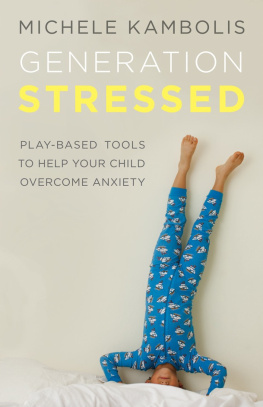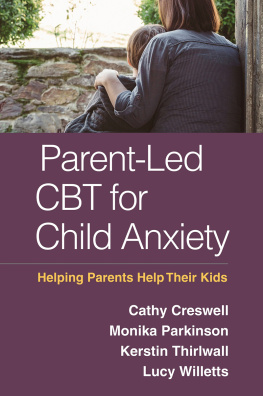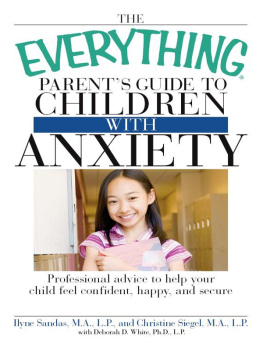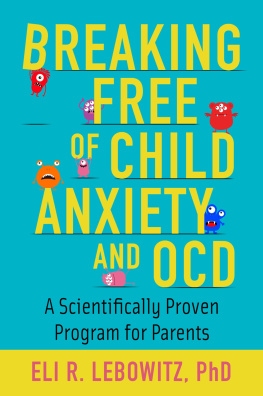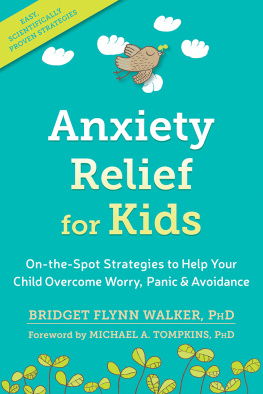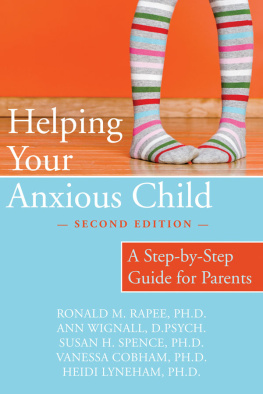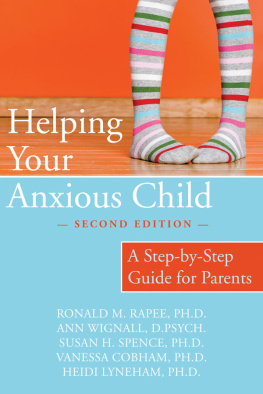ACKNOWLEDGMENTS
Im grateful to be working at a time when there is great attention to the needs of children and families, and Im equally grateful to have many colleagues who take it as the purpose of their spirit to inspire deeper insight and understanding. I stand on the shoulders of great thinkers and particularly wish to acknowledge the depth of learning and support I have received from Dr. John Allan; for two decades, he has been unwavering in his compassionate guidance.
It doesnt escape me that so much of my joy in writing this book is thanks to the heartfelt work of a team of clinicians and students who have contributed a great deal of knowledge, insight and creativity to a topic for which we share a deep commitment. Liana Yip, Alyssa Bauman (nourished.ca), Natasha Saini, Stephanie Mather and Myriame Lyons have worked with hundreds of children, finetuning and redesigning the concepts and activities to ensure they truly accomplish the heart of their purpose. And to Jamie Lynn, your steady and capable presence has been deeply reassuring and truly invaluable.
Without the brave families and children who have allowed me to enter their world in times of great vulnerability, this book would not exist. Im honored that you have trusted in me.
To my editor, Maggie Langrick, thank you for creating an opening of transformation through the writing of this book, and for your belief in me as a first-time book author.
And to my family and friends, through your sustenance you open me up to possibility and a faith that anything can be accomplished.
ONE
INSIDE THE ANXIETY EPIDEMIC
Arianna
When I first met Arianna, she was the most withdrawn, unreachable child I had ever seen. She rarely met my gaze, and I knew Id have to work hard to connect with her. When she spoke, her voice was flat and lifeless, and it seemed that her life force had been all but extinguished.
Her parents told me that as a fifth grader, Arianna had led an active life, playing soccer and hanging out with her friends, and they described her as having been a warm, sensitive and compliant child. Now, two years later, she seemed disengaged with life, spending time only with her twin sister and seldom joining her family for restaurant dinners or outings. Beneath her timidity were persistently racing thoughts, stomachaches and a dark foreboding that something terrible was about to happen.
She had seen talk therapists before, her parents told me, who had discussed at length all the underlying reasons for her distressher parents divorce, her eldest sisters move to a new school and her persistent struggle to feel good enough. Arianna seemed to have great understanding about why she felt anxious, but talk therapy hadnt freed her from her emotional terror.
She wanted to have friends, go to the mall and finish seventh grade with her peers. She knew she was falling behind both academically and socially, but she was unable to leave the house, let alone challenge her fears about the wider world. And she knew that her parents were exasperated and angry that the time and effort theyd put into several different, well-meaning approaches had been essentially unsuccessful.
Nicholas
From very early on, Nicholass mother could see he would be a challenging child to parent. The infant years were unbearable. He had a highly sensitive temperament and was terribly difficult to soothe; putting him down for more than a few moments was impossible. His pediatrician surmised that Nicholas must be experiencing some kind of chronic physical discomfort, or perhaps colic, but offered no solutions. When Nicholas entered grade school, his play dates were few and far between. He was easily agitated and often lashed out at other children. Even when he was able to hold it together at school, Nicholas returned home emotionally defensive and disconnected.
A pediatric psychiatrist diagnosed ADHD (attention deficit hyperactivity disorder) and prescribed stimulants, but the medication only seemed to make Nicholas more restless and sad. Hed had treatment using a biofeedback machine that identified how his body was reacting to stress and helped him try to manage those impulses, hed been to play therapy to help him learn to express his anxiety using toys and art and his mother had pulled wheat gluten, dairy and sugar almost entirely from his diet. By the time Nicholas was eight years old, his mother had taken numerous parenting workshops, read dozens of books about parent-child relationships and dragged her husband to several child specialists to try to better understand their son. By the time she reached my office, she felt she was failing Nicholas and she was overcome with parental guilt. Yet, still Nicholas was suffering and was quick to say, I hate my life. I wish I didnt exist!
The anxiety epidemic
Anxiety has many faces. Some children worry excessively or are bombarded with their own negative thoughts; others have trouble eating or sleeping or become easily overwhelmed by a change in their routine. Anxiety can look like defiance, resistance or lack of focus. It is sometimes attributed to a shy temperament or minimized as a being just a phase or no big deal. However, for parents witnessing their child struggle with these emotional challenges, anxiety most certainly is a big deal.
I, too, believe that childhood anxiety deserves our attention. After eighteen years of counseling children in schools, clinics and private practice, Ive seen a startling increase in the frequency and seriousness of clinical levels of anxiety in children and youth. In fact, according to the Anxiety and Depression Association of America one in eight children today has a clinical level of anxiety. And when we factor in children with milder levels of anxiety, the number skyrockets. It is this cultural trend that this book addresses and that is leading experts and parents the world over to dub this era the Age of Anxiety.
Left unaddressed, chronic anxiety can disrupt many aspects of development, including a childs capacity to learn and ability to connect socially as well as the opportunity for the brain to grow and make connections. In time, children with high levels of anxiety are more likely to face depression, turn to substance use, become less likely to finish high school and may therefore have a harder time keeping a job or managing financially.
Fact: In the United States, anxiety disorders cost more than $42 billion each year in hospitalizations, disability disbursements, medical care and lost productivity.
To understand the role culture has played in this sharp generational rise in mental disorders, Jean Twenge of San Diego State University conducted one of the most groundbreaking studies to date. The 2004 study, published in Personality and Social Psychology Review, assessed data from ninety-seven studies to examine change over time in locus of control. In psychology, we use the term locus of control to describe the causal relationship between our behavior and rewards. The locus of control can be either intrinsic (inside ourselves) or extrinsic (outside ourselves). It answers the question of who determines our fate: us or outside forces beyond our control. With an intrinsic locus of control, we determine our own priorities and are empowered to work towards them through our own efforts. In other words, our goals relate to our values, personal growth and relationships, and our self-esteem springs directly from our innate qualities. An intrinsic locus of control brings a sense of connectedness, community engagement, concern for the environment, and a desire to truly make a difference, which leads to greater happiness overall. It roots us in shared responsibility and enlivens our spirit.

